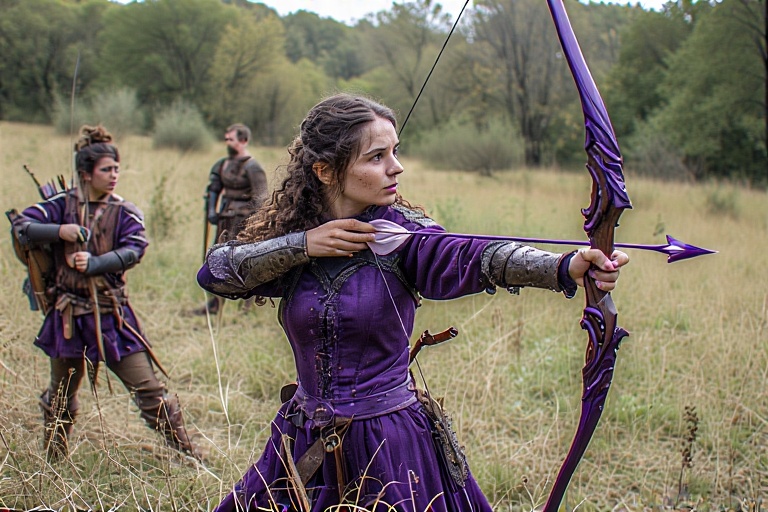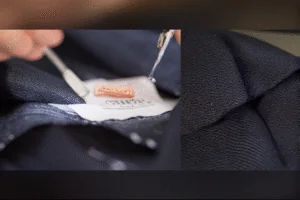
women’s dark purple medieval archery bow
Introduction
Archery, one of humanity’s oldest arts, has shaped history through warfare, hunting, and sport. From medieval Europe’s battlefields to ancient hunting grounds, the bow symbolizes power, precision, and craftsmanship. Today, archery thrives as a competitive sport and a way to connect with the past. Among the many types of bows available, the women’s dark purple medieval archery bow stands out as a unique fusion of historical authenticity and modern personalization. This article explores the rich history of women in archery, the types of medieval bows, the art of customization, and why such a bow holds appeal in the modern world. Whether you’re a history enthusiast, an archer, or simply curious, this guide provides an in-depth look at the women’s dark purple medieval archery bow.
The History of Women Archers in Medieval Times
Archery in medieval Europe is often linked to male warriors, but women also played a significant role. Historical records and artistic depictions show noblewomen engaging in archery, particularly for hunting and recreation. Medieval manuscripts from the 14th and 15th centuries depict ladies of the court practicing with bows and arrows, suggesting archery was an acceptable skill for high-status women. For example, hunting was a key part of aristocratic culture, and women participated alongside men, using bows to pursue game.
Moreover, during times of conflict, women used bows for defense. When male defenders were absent, women protected their homes and families, demonstrating archery’s universal appeal across genders. In other cultures, such as Japan, female warriors known as Onna-Bugeisha were trained in archery as part of their martial arts education. Figures like Isabella of France, known for her strategic leadership, may have also been skilled archers, though direct evidence is limited. These examples highlight that women have long been involved in archery, challenging traditional gender roles.
Types of Medieval Archery Bows
Medieval archery bows varied widely depending on their region and purpose. The English longbow, iconic for its role in battles like Agincourt, was renowned for its power and range. Typically made from yew wood, longbows required significant strength to draw, with draw weights often exceeding 100 pounds. They were essential for both warfare and hunting, offering long-distance accuracy.
Another common type was the recurve bow, characterized by tips curving away from the archer. Recurve bows balanced power and maneuverability, making them popular across Europe and Asia. Designs varied by culture, with some featuring intricate carvings or decorations. For instance, Turkish and Mongol horse bows were compact recurves suited for mounted archery.
While medieval bows were not specifically designed for women, women likely used the same bows as men, adjusted for their strength and size. Modern recreations of these bows often include options for different draw weights and lengths, making them more accessible to female archers. Today, artisans craft bows that replicate these historical designs while incorporating modern materials for durability.
Customization in Modern Medieval Archery
In the modern era, bow making has been revived with a focus on historical accuracy and personalization. Artisans and companies specializing in traditional archery offer handcrafted bows that replicate medieval designs, using woods like yew, ash, or hickory. These bows can be customized to meet the buyer’s specific needs, including draw weight, length, and aesthetic preferences.
Color customization is a popular option, allowing archers to choose bows that reflect their personal style. A women’s dark purple medieval archery bow, for example, can be crafted by staining or painting the wood in a rich purple hue, provided the materials and finish allow it. Companies like Fairbow, Medieval Archery, and Grayvn Traditional Archery are known for their handcrafted bows and may offer such customization services. These artisans work closely with customers to create functional and visually unique bows, ensuring a perfect blend of form and function.
Additionally, some companies offer “You Finish” bows, allowing archers to complete the customization process themselves. This option appeals to enthusiasts who want a hands-on experience in crafting their dark purple medieval archery bow. Customization ensures that the bow not only performs well but also stands out as a unique piece of art.
The Appeal of a Women’s Dark Purple Medieval Bow Today
The women’s dark purple medieval archery bow appeals to a wide range of enthusiasts for several reasons. For historical reenactors, such a bow adds authenticity to their gear while standing out with its unique color. Collectors value its rarity and craftsmanship, making it a prized possession. The color purple, historically associated with royalty and luxury, adds a layer of symbolism, evoking the prestige of medieval nobility.
Beyond aesthetics, a medieval-style bow can be used for target archery or traditional hunting, provided it meets performance standards. Customization allows women to choose a bow that fits their physical attributes and shooting style, enhancing their archery experience. For example, a bow with a lower draw weight can be ideal for beginners, while experienced archers may prefer a higher draw weight for greater power.
Furthermore, the dark purple medieval archery bow appeals to those involved in fantasy sports or live-action role-playing (LARP). Inspired by works like The Lord of the Rings, these bows can be designed to resemble iconic fantasy bows, adding an element of fun and immersion. Whether for sport, reenactment, or collection, this bow offers a unique blend of history and modernity.
Practical Considerations for Female Archers
When selecting a women’s dark purple medieval archery bow, several factors ensure it suits the user. Draw weight, the force needed to pull the bowstring, should match the archer’s strength to avoid injury and ensure accuracy. For women, especially beginners, a draw weight of 20–40 pounds is often recommended, though this varies based on individual physique and experience.
Draw length, the distance the bowstring is pulled, should be comfortable and allow for proper form. A bow that is too long or heavy can be cumbersome, so lightweight materials and ergonomic designs are key. For example, a recurve bow may be easier to handle than a longbow for some female archers due to its compact size.
Instruction from a qualified archery coach is essential, particularly for newcomers, to learn proper technique and safety practices. Regular practice and maintenance, such as checking the bowstring and limbs for wear, are crucial to keep the bow in good condition. Archers should also invest in accessories like quivers and arm guards to enhance their experience.
Comparison of Medieval Bow Types
| Bow Type | Material | Typical Use | Draw Weight Range | Suitability for Women |
|---|---|---|---|---|
| English Longbow | Yew, Ash | Warfare, Hunting | 50–150 lbs | Adjustable for lower weights |
| Recurve Bow | Wood, Horn, Sinew | Hunting, Mounted Archery | 20–100 lbs | More maneuverable, beginner-friendly |
| Horse Bow | Wood, Fiberglass | Mounted Archery | 20–60 lbs | Compact, ideal for smaller frames |
FAQs
Q: Are there historical records of women using purple bows?
A: No specific records exist of women using purple bows in medieval times. However, noblewomen engaged in archery, and purple was associated with royalty. Modern custom bows can be made in purple to evoke this historical connection.
Q: Can I find a pre-made women’s dark purple medieval bow, or do I need to custom order one?
A: Pre-made bows in dark purple are rare due to the specific color. Custom ordering from a bowyer like Fairbow or Grayvn Traditional Archery is likely necessary to achieve the desired aesthetic.
Q: What are the best materials for a medieval-style bow?
A: Traditional materials include yew, ash, and hickory for the bow stave, with flax or silk for the bowstring. Modern bows may use laminated woods or fiberglass for added durability and consistency.
Q: How do I choose the right draw weight for a women’s medieval bow?
A: Choose a draw weight that matches your strength, typically 20–40 pounds for beginners. Consult with a coach or bowyer to ensure the bow fits your physique and skill level.
Q: Can a dark purple medieval bow be used for competitive archery?
A: Yes, if the bow meets performance standards and is properly tuned. Ensure it complies with competition rules, which may vary by organization.
Conclusion
The women’s dark purple medieval archery bow is more than just a piece of equipment; it’s a bridge between the past and present. It combines historical craftsmanship with modern personalization, offering a unique way to engage with the rich tradition of archery. Whether for historical reenactment, sport, or collection, this bow holds a special appeal. For those interested in owning one, reaching out to skilled bowyers who offer customization can turn this vision into reality. So, pick up your bow, aim for the stars, and let your arrows fly through time. Visit Fairbow or Medieval Archery to start your journey today!

